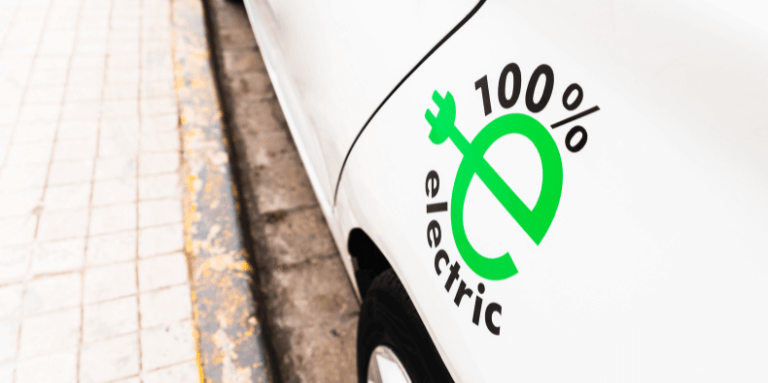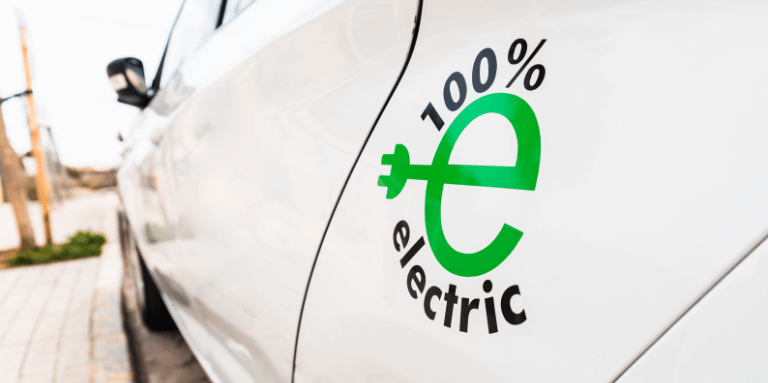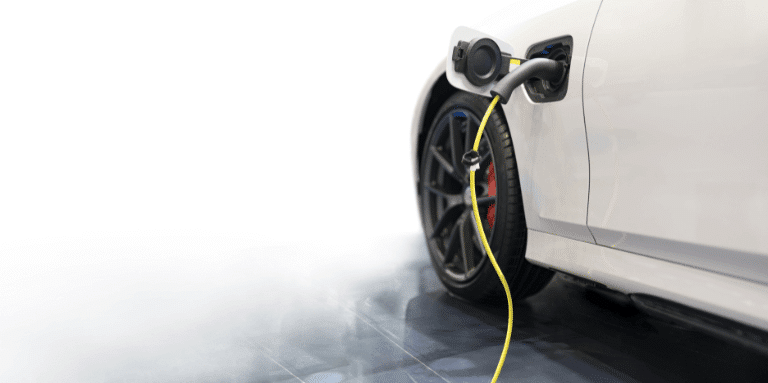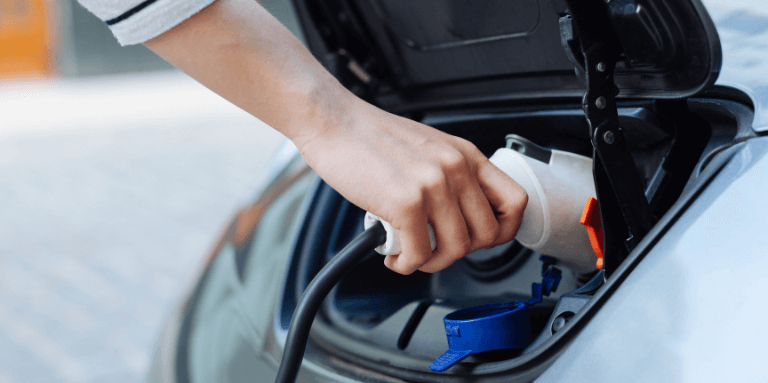With Beev
Switch to
Electric car
or install your
Charging station
For individuals and businesses
What is intermodality?
L'intermodality is a method of combining different means of transport to complete a journey. Intermodality, as opposed to plurimodality which offers a choice between several modes of transport, and multimodality where the passenger's journey is not predefined, refers to a journey structured by dedicated infrastructures, guaranteeing fluid interconnection. In other words, it enables users to make a complete trip by successively using several modes of transport connected via intermodal hubs (electric cars and electric scooters, subway trains, bicycles, etc.).
In sparsely populated areas, the exclusive use of the car is often indispensable for daily travel, in the absence of viable alternatives. However, infrastructure permitting, car-pooling or bike-sharing can be relevant solutions. Conversely, in densely populated areas, intermodality offers a credible alternative to individual car use, which is becoming less and less appropriate. However, it is important to point out that despite the 111,000 charging stations on French territory (October 2023, Avere France), these charging solutions are unevenly distributed in each département.
Indeed, these approaches are becoming increasingly essential to ensure more accessible and affordable mobility. As well as easing congestion on the roads, you'll save money in the long run, given the inevitable rise in energy prices for recharging your electric vehicle.
In short, promoting intermodality means encouraging users to adopt more economical means of transport and improving their comfort.
What is micromobility?
The micromobility is the use of soft modes of transport, such as bicycles, scooters and electric scooters, to complement public transport and cars. In short, micro-mobility encompasses a variety of light, compact electric modes of transport, such as electric scooters, electric bicycles and unicycles. These vehicles are distinguished by their practical portability, making them easy to carry by hand or stow away on public transport. These means of transport are easy to use and also environmentally friendly.
These modes of transport offer a practical and environmentally-friendly solution for short-distance travel, helping to reduce road congestion and promote more active urban mobility.
Integrating these different modes of electric transport into a coherent intermodal system is essential to optimize their use and maximize their environmental benefits. By enabling users to easily combine different modes of transport according to their needs, we can create fluid and efficient transport systems that better meet the expectations of citizens.


Microability: what needs to be done to make it widespread?
Widespread adoption of electric vehicles and micromobility modes requires the provision of adequate infrastructure, such as charging stations for electric cars, safe cycle paths and parking areas for bicycles and scooters.
In addition, incentives such as subsidies for the purchase of electric vehicles or discounts on public transit fares can encourage individuals to adopt these sustainable modes of transport.
By combining these innovative approaches with smart urban planning and supportive transport policies, cities can create environments conducive to clean, accessible and efficient mobility for all.
The main obstacles to adopting an eco-friendly vehicle
Despite the many advantages of electric mobility, a number of reservations have arisen in the wake of the expansion of electric cars.
The price
The major obstacle to the adoption of electric vehicles remains their high cost compared with their combustion counterparts. This price gap is due to the high production cost of batteries, which contributes to the higher total price of the vehicle. However, thanks to technological advances and research efforts, this cost is gradually decreasing every year. To illustrate this point, the Peugeot e-208 has a price tag of €34,800, while its internal combustion counterpart costs €30,700.
In spite of this drawback, it is worth highlighting the measures offinancial assistance granted by governments, at both national and regional level, to reduce the price of electric vehicles. These public subsidies help to bridge the price gap, making electric vehicles more affordable and competitive with combustion-powered vehicles.
What's more, maintenance and fuel costs are lower for electric vehicles, which can offset the initial price differential. In fact, recharging an electric vehicle at home costs around three times less than filling up a combustion vehicle. On an average of 15,000 kilometers driven per year, the savings on fuel costs can amount to several hundred euros.
To find out more about the price of an electric vehicle in 2023, this article might interest you: How much will an electric car cost in 2023?
Range remains crucial when choosing an electric car, and must correspond to the user's needs. It depends on a number of factors, such as the battery, the vehicle's weight and aerodynamics, as well as the journeys made. Urban or suburban driving favors maximum autonomy, thanks to the regenerative braking of electric cars. Weather conditions also influence consumption in kWh/100 km.
According to the French Ministry of Ecological Transition:
- cars registered in France travel an average of 12,200 km/year, i.e. 230 km
- light commercial vehicles travel 14,700 km/year, 280 km/week.
Currently, the electric cars available offer a real range of between 200 and 500 km per charge, meeting the daily needs of the majority of drivers, such as the Tesla Model 3 Highland Long Range (offering 629 km).
What's more, the range of an electric car is influenced by many factors, including :
- Speed Driving at too high a speed,
- Driving style Driving smoothly and carefully helps maximize battery life,
- The load carried transporting heavy objects or towing or towing a trailer increases energy consumption and reduces range,
- Road topography Driving in the city with many stops and starts consumes more energy than driving on country roads or freeways.
- Use of vehicle equipment How to use the air conditioning, heating, heated seats and other electrical equipment,
- Outside temperature Extreme temperatures, hot or cold, can reduce battery life.
Find out more:


Charging infrastructure
The proliferation of charging points for electric cars in France brings with it a number of challenges. These include lack of transparent tariffsbut above all variable depending on :
- of the operator,
- terminal type,
- charging power,
- the duration of the recharge.
UFC-Que Choisir has noted rate differences of up to 800% on the same charge point.
We also have an insufficient insufficient number of terminals. According to Avere France, we need around 1 charging point for every 10 electric vehicles to meet demand, despite the 111,000 charging points available to the public. Today, however, there is only one charging point for every 22 vehicles in France.
What's more, 39% of public charging points are out of order at least once a month, meaning that they are not sufficiently available. Good news, however! Emmanuel Macron has envisaged the installation of 400,000 public charging stations by 2030, following a study by Avere-France proposing between 330,000 and 480,000.
What are the benefits of intermodality for electric vehicles?
Indeed, this approach offers many advantages for electric car users. Intermodality is a key element in taking full advantage of the benefits of electric vehicles and promoting more sustainable mobility. By combining electric vehicles with other modes of transport, drivers can enjoy a multitude of benefits.
Optimizing autonomy
One of the main obstacles to the adoption of electric cars is their limited range compared with combustion-powered vehicles, as previously stated. Intermodality makes it possible to get around this constraint by combining the electric car with other means of transport, such as public transport, cycling or walking.
The result:
- Lower recharge frequency,
- Battery optimization,
- Battery less prone to wear,
- Reduce the stress of recharging...
In short, by using public transport, cycling or walking for these journeys, electric vehicle drivers can conserve battery power for longer trips requiring greater range.


Reduce operating costs
Intermodality also reduces the cost of using an electric car. Public transport and bicycles are generally cheaper than cars, and walking is free. What's more, intermodality avoids parking costs, which can be high in big cities.
In fact, by using public transport, cycling or walking for short journeys, drivers of electric vehicles considerably reduce their expenses. Inevitably, this saves them money on their electricity bills and extends their battery life. Similarly, by reducing the number of kilometers traveled by car, intermodality can contribute to reduce maintenance costssuch as tire replacement and general repairs. Electric vehicle drivers can also save money on tolls by using public transport or alternative routes that don't require tolls.
Improving comfort and quality of life
This eco-friendly method also offers advantages in terms of comfort and quality of life. By using public transport, drivers can take advantage of their journey to relax, read or work. What's more, intermodality reduces the stress and pollution associated with traffic jams.
However, these comments need to be qualified. The effectiveness of intermodal practices depends essentially on the articulation of efficient transport networks, in particular a solid public transport system that meets the mobility needs of the majority. The development of intermodality can enhance the competitiveness of a sustainable transport offer, but it cannot compensate for the shortcomings of an underdeveloped system. Attractive intermodal practices therefore depend on an adequate transportation system.
Conclusion
Intermodality is an intelligent approach to mobility, combining different modes of transport to meet individual travel needs. It paves the way for more sustainable and efficient mobility, contributing to a more environmentally-friendly future. By adopting intermodality, both private individuals and professionals can optimize the use of their electric vehicles in a number of ways.
It's a win-win solution for everyone. It cuts costs, improves efficiency and reduces the environmental impact of travel. By adopting an intermodal approach to mobility, we can create cities that are more sustainable and more pleasant to live in.
Want to go electric?
































